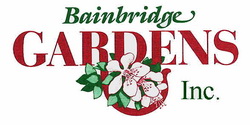Spring hours: Mon-Sat 9:00am-5:30pm, Sun 10:00am-5:30pm

SIX INTERESTING EDIBLES
FOR YOUR GARDEN
Gardening enthusiasts love to peruse our shelves, looking for something new or something delicious. The problem is there are almost too many things to look at!
Well, here are a few things that you might have overlooked:
- Shiso(Perilla frutescens) is an Asian herb that is gaining popularity each year. It's a staple in Japanese cuisine but has a lot possiblities in the kitchen. Being part of the mint family, it has a slight mintiness, but also hints of cinnamon, anise, and citrus. You can use shiso a bit like basil (also in the mint family). Red shiso is commonly used to dye Japanese plums their characteristic pink.
- Lovage is a tall plant that culinarily resembles celery in smell and taste. People use the leaves, stalks, and seeds in culinary applications. We recently saw a cocktail made from lovage syrup and celery bitters (you really have to like celery for this cocktail!).
- Mexican sour gherkins (aka mouse melon (aka cucamelons)) look like tiny watermelons, but you are in for a surprise if you are expecting that flavor. These gherkins taste like cucumber mixed with lime. They can be sour. You may find these in salads, pickled, or even sauteed.
- Welsh onion are not from Wales, they are from Asia. Also known as Japanese bunching onions, you can dig up an entire bunch and use as spring onions or just clip the greens.
- Ichiban eggplants are fairly quick to mature and produce fruit that are 6-8 inches long, with a mild taste. As with most eggplant you want to give them lots of sun, well draining soil, and lots of water.
- Sweet coltsfoot/Fuki is a plant that typically grows 2-3 feet tall with leaves that are up to 2 feet wide! This is a plant that thrives on moist soil. The leaves are stems are used in Japanese and Korean cuisine. They need to be blanched to remove some of the bitterness. It's important to note that these plants spread quickly and may be difficult to eliminate if you change your mind about wanting them!

POLLINATOR-FRIENDLY
GARDENING
Did you know that one out of every three foods we eat rely on pollinators. Pollinators fertilize flowers, which then produce seeds, which you can find buried in that apple you eat or on the outside of the strawberry that you pick. In the non-edible world, pollinators help maintain a thriving ecosystem by continuing plant species and adding biodiversity.
As you garden, think about what you are doing in your garden to encourage bees, birds, and butterflies. And also to ensure that we aren't doing to anything detrimental to our flying and buzzing friends.
- Create a pollinator-friendly environment in your backyard. Plant flowers that encourage bees and birds, like asters, coneflowers, lavender, sunflowers, yarrow, etc. Have water dishes in a safe place for pollinators to get a drink.
- Check the labels of any insecticide, herbicide, or fungicide that you use. Be aware of spraying where the bees are and minimizing spray drift.
- Take care of the environment. Climate change not only affects humans.
- Come on in to pick up our list of pollinator friendly plants.

WHAT'S NEW!
Now that Spring is in full swing, the nursery is filling up quickly. Trucks are coming in almost daily, and frankly, we're looking for places to put things. Hopefully, they will make it into your shopping cart soon.
Anyway, during this busy time, we'll try to keep you informed of what's coming through the gate, both in this column and in the What's New link in the menu above. Also, you'll see our weekly posts on Facebook and highlights on Instagram.
So without further ado, what's new?
- Indoor plants - Lisa has been receiving indoor plants about every other week. Is there a hard-to-find plant that you are seeking? Let Lisa know and she'll try to hunt it down for you.
- Veggies - Shipments every week. Veggies can be planted now. Potatoes, onions, asparagus, garlic, leeks are almost gone.
- Lots of tomatoes and peppers. Check the links at the top of the page for a listing of what has come in this year.
- By the way, have your kids try planting a potato. It's very easy, with a high rate of success, and you can do here at Bainbridge Gardens. We have the pot, the soil, and the potatoes. You supply the kids. You can pot up one in a hemp seed bag for $7.99.
- Flowering annuals are here: Geraniums, begonias, fuchsias, marigolds, etc, etc.
- Ornamentals - Another shipment of rhododendrons. Bamboo, maples, natives, pollinators, and conifers have arrived recently.
Previous articles:
Nov 2023 - Now that it's getting cooler
Oct 2023 - It's still time to plant garlic
SAFETY POLICIES AT BAINBRIDGE GARDENS
Face masks are optional throughout the nursery. We ask that if you are feeling ill and cannot wear a mask, please stay home and call us to arrange a contact-free delivery or curbside pickup. We continue to accept orders over the phone or by emailing us, but please note that these orders take 24-48 hours to fulfill.


